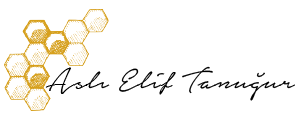Pollen is the male fertilizing agent of flowering plants, trees, grasses, and weeds. Bee pollen, on the other hand, is the dried pellets of pollens. Flowering plants produce pollen in the anthers within the flower. Pollen production is influenced by the weather, wind, rain, birds, and other insects. Pollen grains must be transferred from the anther to the stigma to cross-pollinate plants from another plant of the same species. Self-pollination occurs when a flower pollinates other flowers on the same plant. Plants with tiny flowers are usually wind-pollinated. However, the pollen of plants with showy flowers is dispersed by insects. There are even differences in the size and shape of pollens between plant species.
Wind pollination occurs without the assistance of other insects. The significant difference in the wind carried pollen is its smooth surface. However, the pollens carried by the insects, such as bees, are covered with spines, warts, granules, or channels. Such a surface helps in the identification of the pollen grains. Bees have hairs on their bodies and legs which pick up pollen grains as they collect nectar from the flower. Bees play a vital role in the pollination of crops. About 90% of human foods are obtained from 82 plant species, of which bees pollinate 63 of them.
Pollen is crucial for the nutrition of bees as it is the sole protein source of their diet. Honey bees start collecting pollen and nectar very early in the morning. Bees first fill their stomachs with honey and then visit flowers around. It is interesting to note that bees collect pollens that are attached to their hairy bodies by the brushes on their middle legs. Meanwhile, they moisten through mouth secretion to prevent the formation of grain clusters. Then, they drop the pollen in their pollen bucket located in their back legs. This process even continues during their flight. In general, field bees prefer to collect either nectar or pollen. However, a minimal number of worker bees may collect both at the same time, which is often observed when there are plants providing nectar and pollen.
Pollen is the sole food for babies and young bees to develop their glands, muscles, tissues, and other vital organs by providing proteins, lipids, sterols, vitamins, and minerals. Honey bees can produce pollen in two hours after they leave the comb cells. Pollen production reaches a maximum in 5 days, and declines gradually after 8-10 days but continues to 15 to 18 days. In the following days, they start processing nectar to produce honey. A worker bee needs about 3.2 mg protein to become an adult by consuming about 145 mg pollen. Pollen is very nutritious due to its rich content in B-Complex vitamins (B1, B2, B3, B5, B6), vitamins E and C, and minerals (potassium, calcium, magnesium, zinc, iron). Pollen described as one of nature’s most completely nourishing food plays a significant role in feeding the bees as a protein source. Besides, it contains many valuable nutrients, such as fibers and phenolic compounds. Danner, N., Molitor, A.M., Schiele, S., Härtel, S. and Steffan‐Dewenter, I., 2016. Season and landscape composition affect pollen foraging distances and habitat use of honey bees. Ecological Applications, 26(6), pp.1920-1929. Kieliszek, M., Piwowarek, K., Kot, A.M., Błażejak, S., Chlebowska-Śmigiel, A. and Wolska, I., 2018. Pollen and bee bread as new health-oriented products: A review. Trends in Food Science & Technology, 71, pp.170-180.
Polenin Besin İçeriği ve Kullanımı
Polen dünyadaki “Tek Tam Gıda” olarak tanımlanmaktadır. Aslında bitkilerin üreme hücresi olan polen, arılar tarafından yavru beslenmesinde ve arı sütü salgılayan genç işçi arıların beslenmesinde yüksek miktarda kullanılır.
Polen bileşiminde; lifler, vitaminler, mineraller, aminoasitler, fenolik ve flavonoid maddeler ve yaklaşık %20 oranında protein içerir. Bu da günlük vitamin ve mineral ihtiyacınının karşılanmasına destek olur.
Polenin içeriğinde; B1, B2, B3, B5, B6, E, C vitaminleri, potasyum, kalsiyum, magnezyum, çinko, demir, bakır, manganez ve fosfor gibi mineraller yer alır.
Yetişkinler için günde 2-4 tatlı kaşığı, çocuklar için ise günde 1-2 tatlı kaşığı polen tüketilmesi önerilmektedir.
Polen ve Çocuklarda Görülen Hepatit B
2001 yılında Ryazan Üniversitesi’nde yapılan çalışmada; Hepatit B’li çocukların polen tüketiminin karaciğer fonksiyonları üzerine etkisi araştırılmıştır. Çalışmaya 3-5 yaş aralığındaki karaciğer fonksiyon değerleri yüksek olan 65 Hepatit B’li çocuk katılmıştır. Bu çocukların 18’inde ise kabızlık bulguları olduğu tespit edilmiştir. Çalışmaya katılan 65 çocuktan 47’sine 4 hafta boyunca yemekten önce günde üç kez bal ile karıştırılan polen verilmiştir. 18’ine ise 4 hafta boyunca günde 2 kez 0.5 ml/kg polen ve laktuloz (kabızlık tedavisinde kullanılan emilmeyen bir şeker) karışımı verilmiştir. Çalışmanın sonucunda başlangıçta yüksek seyreden karaciğer testlerinin her iki grupta da (ALT, AST, GGT) düşerek normal değerlere yaklaştığı bulunmuştur. Araştırmacılar bunun polenin yüksek oranda vitamin ve mineral içermesinden kaynaklandığını ve karaciğer hastalıklarında polen tüketiminin olumlu etkileri olduğunu belirtmişlerdir.
Reference: D. Uzbekova, V.G. Makarova, L.G. Chugunova, N.A. Chernobavskaya, L.N. Mirgorodskaya. Pharmacology, “Bee Collected Pollen And Lactulose In Treatment Of Chronıc Hepatıtıs B In Chıldren,“ Ryazan State Medical University, Russia.
